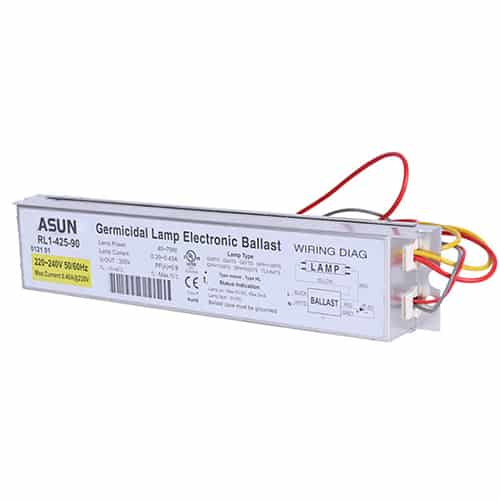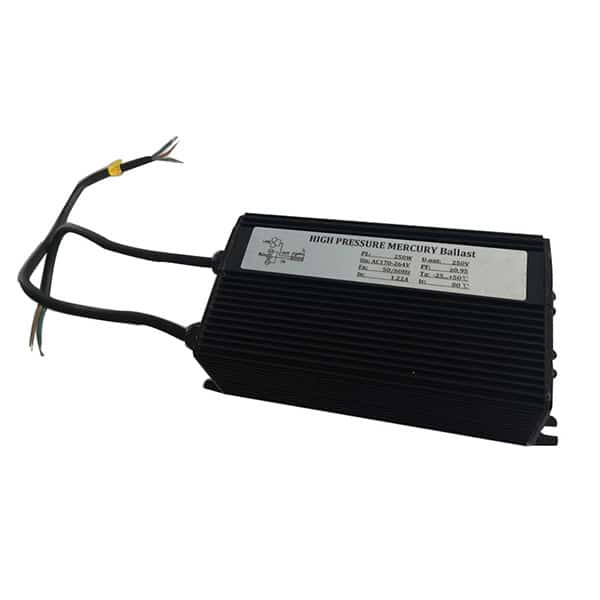An electrical ballast is a critical component of lighting systems designed specifically for gas discharge lamps. Despite their importance, many people might not know what a ballast is or why it’s necessary. We’ll cover the basics of what an electrical ballast is, what it does, the different types, and where you use them.
An electrical ballast is a device used to control the current in gas-discharge lamps, such as fluorescent, metal halide, and high-pressure sodium lamps. By providing the right voltage to start the lamp and then limiting the current flow, ballasts ensure that these lamps can operate safely and effectively. Without a ballast, the lamp would draw too much current, leading to overheating or premature burnout. Ballasts are essential in applications where precise current control is necessary, allowing for stable and efficient lighting.
The primary function of an electrical ballast is to start and regulate the current for gas-discharge lamps. When initially turned on, these lamps require a high voltage to establish an arc between electrodes. Once the arc forms, the ballast reduces the voltage and maintains a steady current to prevent fluctuations. This process not only supports the lamp’s stable operation but also prolongs its lifespan by avoiding excess stress on the lighting components.
There are two main types of electrical ballasts: magnetic and electronic. Magnetic ballasts are the traditional design, using a coil of wire and a metal core to regulate current. They are generally larger and heavier, making them suitable for high-wattage applications like HID lighting. On the other hand, electronic ballasts use solid-state components, making them more compact, efficient, and often quieter. These characteristics make electronic ballasts ideal for applications where energy efficiency and minimal noise are essential, such as residential lighting or office settings.
Each ballast type has unique advantages and disadvantages. Magnetic ballasts, for example, are known for their simplicity and durability, making them well-suited for high-intensity lighting applications like outdoor and industrial settings. However, they tend to be bulkier, less efficient, and may produce an audible hum or flickering light effect, which can be distracting in certain environments. In contrast, electronic ballasts are lightweight, highly efficient, and typically operate silently, with minimal flicker. They are commonly used in environments that prioritize energy efficiency and quiet operation. However, electronic ballasts can be more expensive and may be more sensitive to temperature and humidity.
Electrical ballasts are used across various applications. In residential settings, ballasts are found in fluorescent and compact fluorescent lamps (CFLs), providing stable and efficient lighting. Industrial and commercial environments, such as warehouses, factories, and street lighting systems, use high-intensity discharge (HID) lamps like metal halide and high-pressure sodium lamps with ballasts to achieve strong, consistent light output. They are also vital in aquariums and horticulture, where specific light intensities and color spectrums are needed to support plant growth or create controlled light environments for marine life.
Choosing the right ballast involves considering several factors. First, ensure the ballast’s wattage and voltage match the lamp requirements, as using a mismatched ballast can lead to reduced efficiency or even damage the lamp. The environment is another important factor, as certain ballasts may be more suitable for high-temperature or humid conditions. Efficiency and cost should also be weighed, as higher-quality ballasts tend to have better energy efficiency and a longer lifespan, which can result in long-term savings.
Proper maintenance of electrical ballasts is essential to ensure their longevity and efficiency. Regularly inspecting and cleaning the ballast helps prevent dust buildup, which can interfere with heat dissipation and cause overheating. Monitoring current and voltage during operation can also help detect abnormal fluctuations, indicating potential issues. When ballasts show signs of aging, such as overheating, flickering, or increased noise, it may be time to replace them to maintain optimal performance.
In summary, an electrical ballast is important for gas discharge lighting, so the lamp works right and is safe. Picking the right type of ballast and taking care of it will help your lights last longer and work better.



